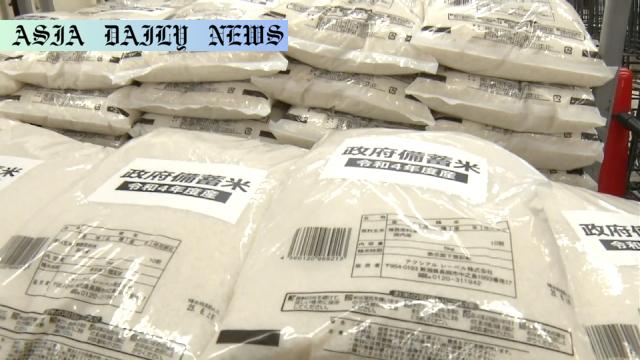Stockpiled Rice – Japan’s government launches a significant sale of stockpiled rice to tackle doubled prices and boost supply.

Japan Tackles Rising Rice Prices Through Strategic Stockpile Sales
In an effort to address surging rice prices, the government of Japan has launched the latest round of sales for its stockpiled rice. Under this initiative, a substantial supply of 200,000 tons of rice is being made available, with the first half open to no-bid contracts starting Wednesday. This bold move aims to stabilize grocery store prices, which have doubled over the past year, straining household budgets.
Agriculture minister Koizumi Shinjiro revealed that within just the first hour of applications being accepted, approximately 30 buyers had already expressed interest. The program primarily targets retailers and distribution channels equipped with rice milling machinery, ensuring that the supply reaches consumers as efficiently as possible. To maintain fairness and meet consumer needs, applicants must ensure that their purchased stock is made available for sale to the public by August 2024.
Ensuring Responsible Distribution and Combating Price Gouging
To prevent exploitation of this initiative, Minister Koizumi emphasized the importance of responsible distribution practices. Some retailers and sellers have focused on clearing their current inventory before applying for the new stock. Additionally, Koizumi has announced plans to introduce legislation aimed at curbing the resale of rice acquired through government sales. The proposed penalties include up to one year of imprisonment or a fine of up to 1 million yen for those found guilty of reselling stockpiled rice at elevated prices.
The overarching goal of the legislation, slated for Cabinet discussion this week, is to ensure that rice from the government’s reserves reaches consumers directly at more reasonable prices. By implementing stricter regulations, the Japanese government intends to reinforce trust in its efforts to stabilize food costs and address public concern.
A Strategic Response to Market Imbalances
This massive release of stockpiled rice not only addresses the immediate crisis of price hikes but also demonstrates Japan’s adaptive capacity in dealing with market imbalances. By swiftly introducing supply measures and enforcing responsible selling practices, the government is showing a proactive commitment to its citizens in this critical time. Such decisive actions pave the way for alleviating consumer burdens while fostering more equitable market conditions in the long term.
Commentary
A Well-Timed Initiative to Address Market Instabilities
The Japanese government’s decision to release 200,000 tons of stockpiled rice represents a timely and strategic measure to address skyrocketing rice prices. This move highlights not only the urgency but also the commitment to mitigating market volatility for a staple food item essential to the nation’s diet and culture.
What stands out most prominently is the inclusiveness of this initiative. By allowing a broad range of retailers and distribution outlets to apply, the government ensures that the benefits of the program are widely available. At the same time, placing a clear deadline for getting the stock to consumers by August provides a layer of accountability that prevents hoarding or delays. Such strategies reflect thoughtful planning aimed at achieving maximum impact within a limited timeframe.
Striking a Balance With Regulatory Measures
The introduction of potential legislation to ban the resale of government-distributed rice underscores the government’s commitment to fairness within the marketplace. This is a commendable step to ensure that the program reaches its intended recipients – everyday consumers – and dissuades opportunistic distributors from taking undue advantage of the scheme.
Further, the penalties for offenders, including imprisonment and fines, signal a zero-tolerance policy for unethical practices. While some might view this as stringent, it aligns with the overall objective of maintaining consumer trust and stabilizing critical food markets amidst economic challenges.
A Blueprint for Crisis Management
Japan’s multi-pronged response to its rice price crisis could well serve as a model for other nations facing similar challenges. The combination of targeted stockpile releases, public accountability through deadlines, and legislative action forms a holistic approach to addressing not just the symptoms but also the root causes of market instability.


